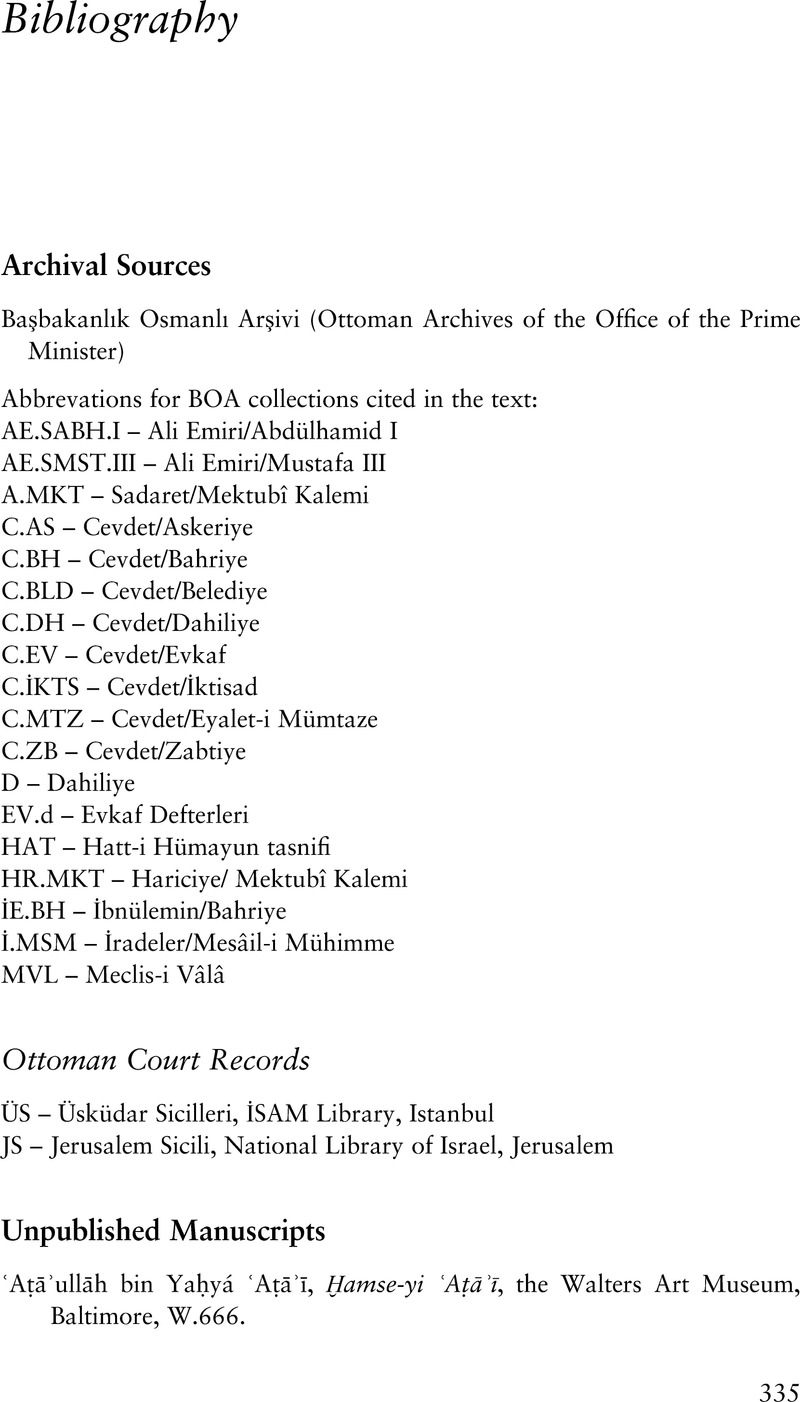Book contents
Bibliography
Published online by Cambridge University Press: 27 July 2021
Summary

- Type
- Chapter
- Information
- As Night FallsEighteenth-Century Ottoman Cities after Dark, pp. 335 - 370Publisher: Cambridge University PressPrint publication year: 2021



